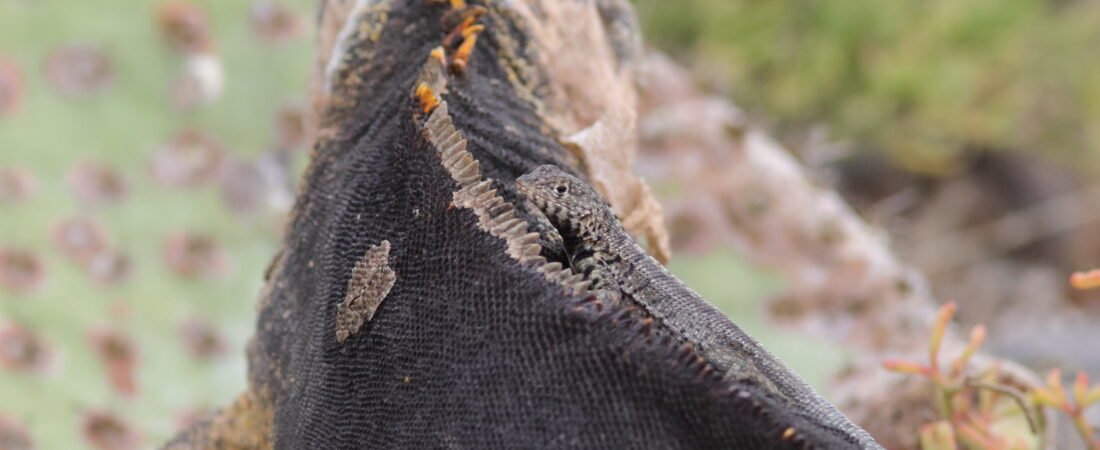As stated in an earlier blog, the Galapagos Islands host 250 vascular plants, 20 reptiles, three land mammals, six seabirds, 22 land birds, two marine mammals, 86 fish, and over 1,200 terrestrial invertebrates which are endemic species. Don’t worry, I will not share all of them. Our trip leader, Kevin Loughlin is the co-author along with John C. Kricher of the book Galapagos: A Natural History Second Edition. He is well versed in the natural history of the islands and thoroughly enjoyed sharing many (61) flower species with Eileen as most everyone else wanted to see the animals.
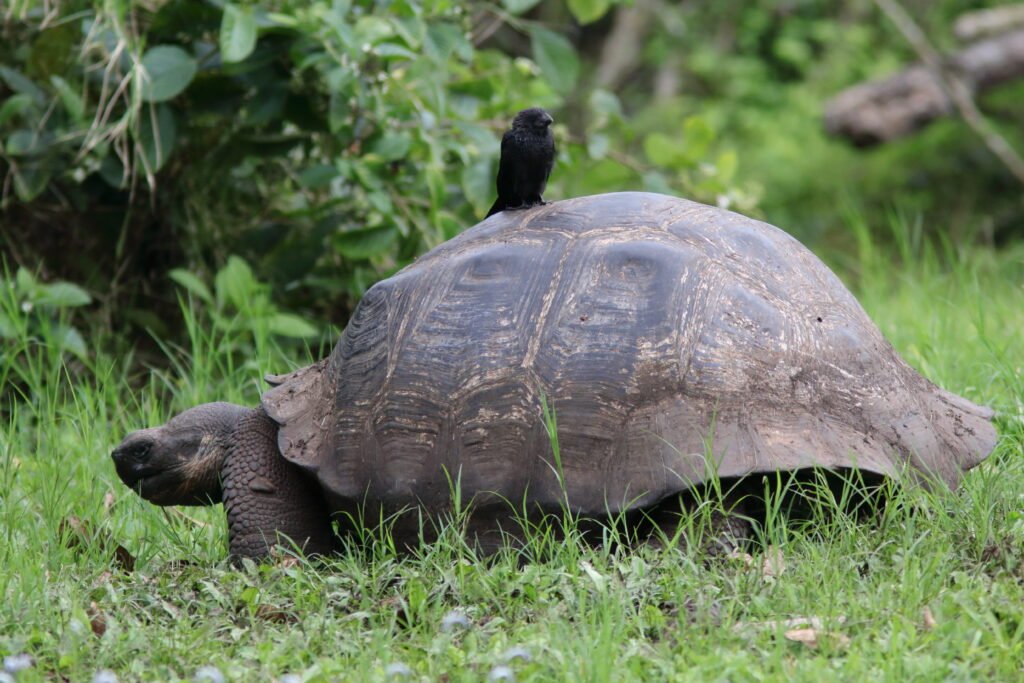
Twelve of the reptiles are species of Giant Tortoises. We would see two species, the Santa Cruz Giant Tortoise and the San Cristobol Giant Tortoise. They are huge. Each island where tortoises are found has one or occasionally two endemic species. The shape of the shell differs in each. Some like the Santa Cruz Giant Tortoise are domed shape. They specialize in feeding on low growing plants. The sanctuary we visited had dozens easy to see and watch. They enjoy the water.
Others like San Cristobol Giant Tortoise are called saddlebacks, though this species is only mildly saddlebacked and some sources consider it domed. The front of the shell opens high allowing the animal to feed on higher growing plants. Back in 1970, it was estimated that the population had dropped to just 700.
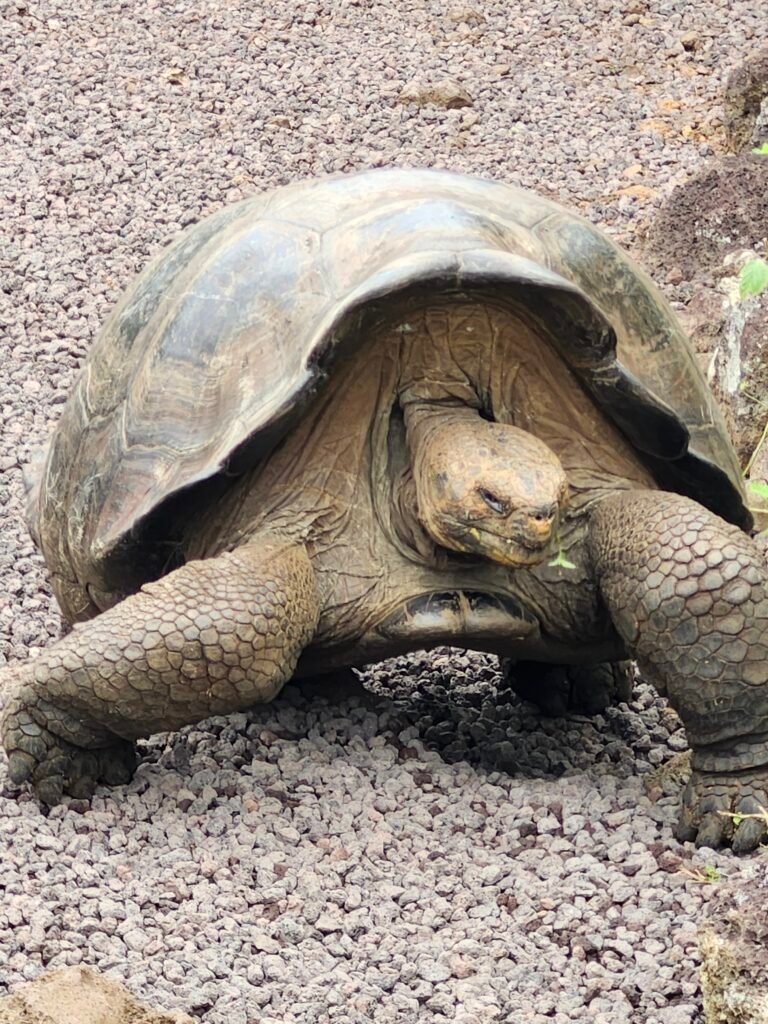
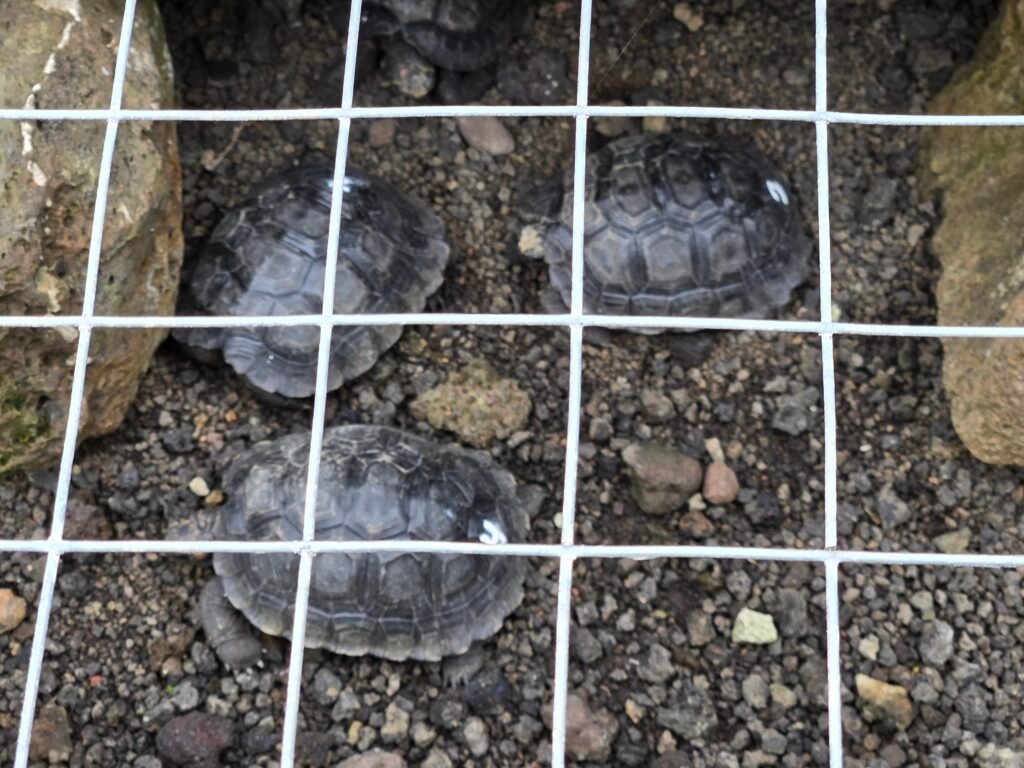
Since then, the government actively and often successfully tried to replenish the population through captive breeding.
During his visit, Charles Darwin recounts spending a week on James Island (now Santiago Island) and visiting a Spanish camp where the men were tasked with gathering tortoises for food. While there, “… we lived entirely upon tortoise-meat: the breast plate roasted … with the flesh on it, is very good; and the young tortoises make excellent soup; but otherwise the meat to my taste is indifferent.” The variety of tortoises earned many comments in his book The Voyage of the Beagle and one can see his brain working on evolution as he writes about the tortoises and the Mocking-thrush (Mockingbirds).
The other reptiles include the two species of Land Iguana, five species of Marine Iguanas, and five species of Lava Lizards found on the various islands. We would find all of them.
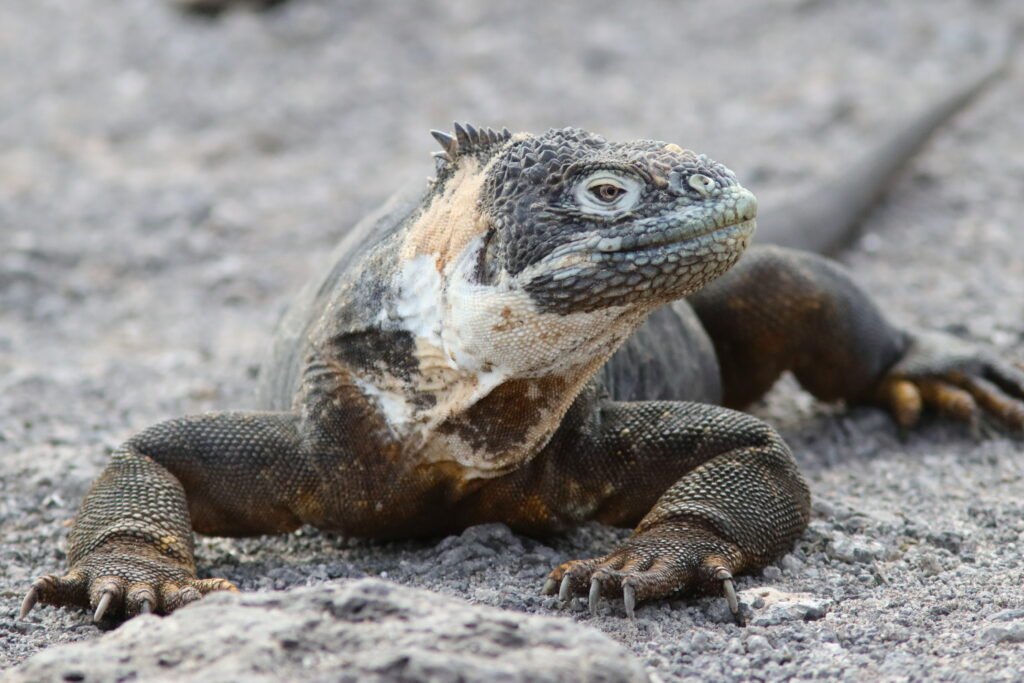
Land Iguana
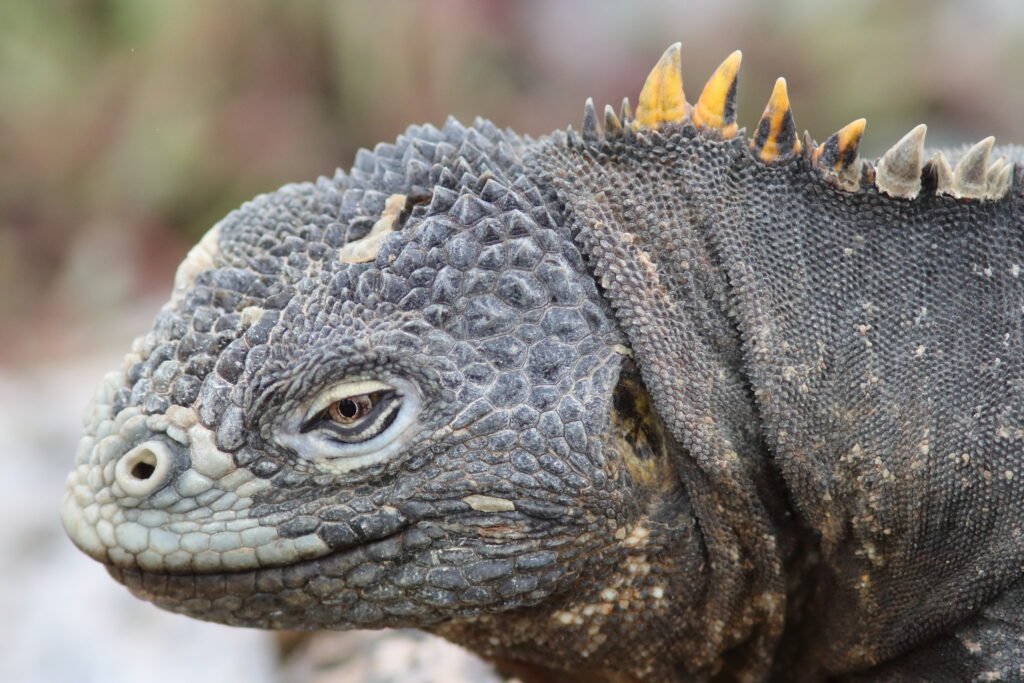
San Cristobol Marine Iguana
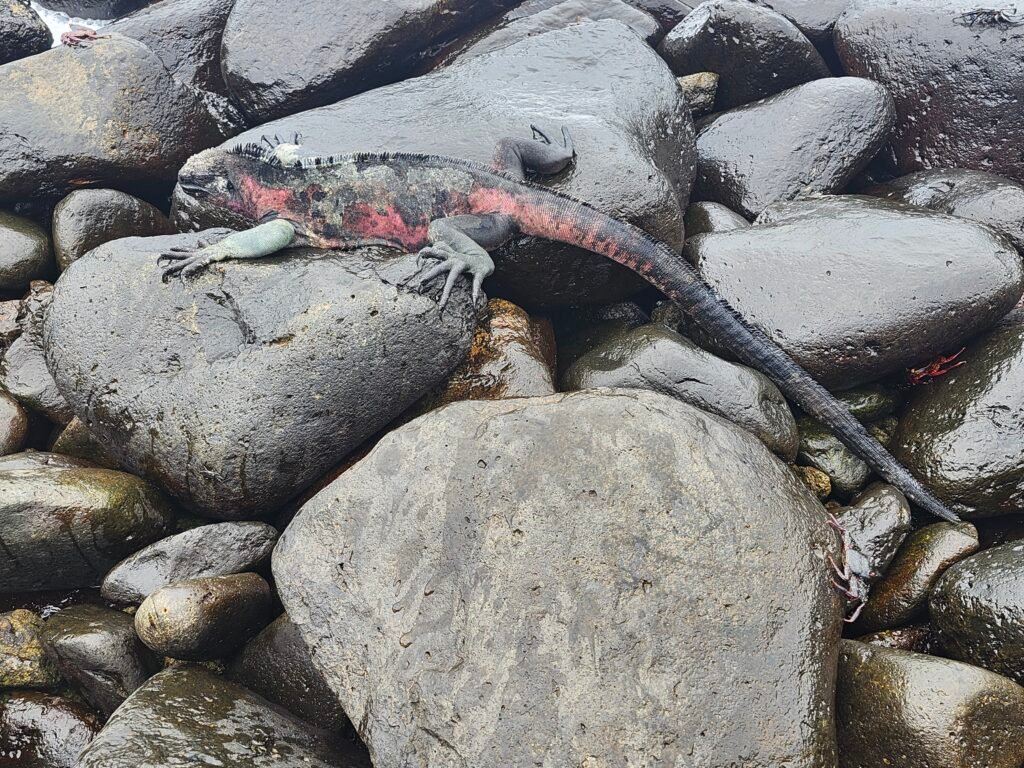
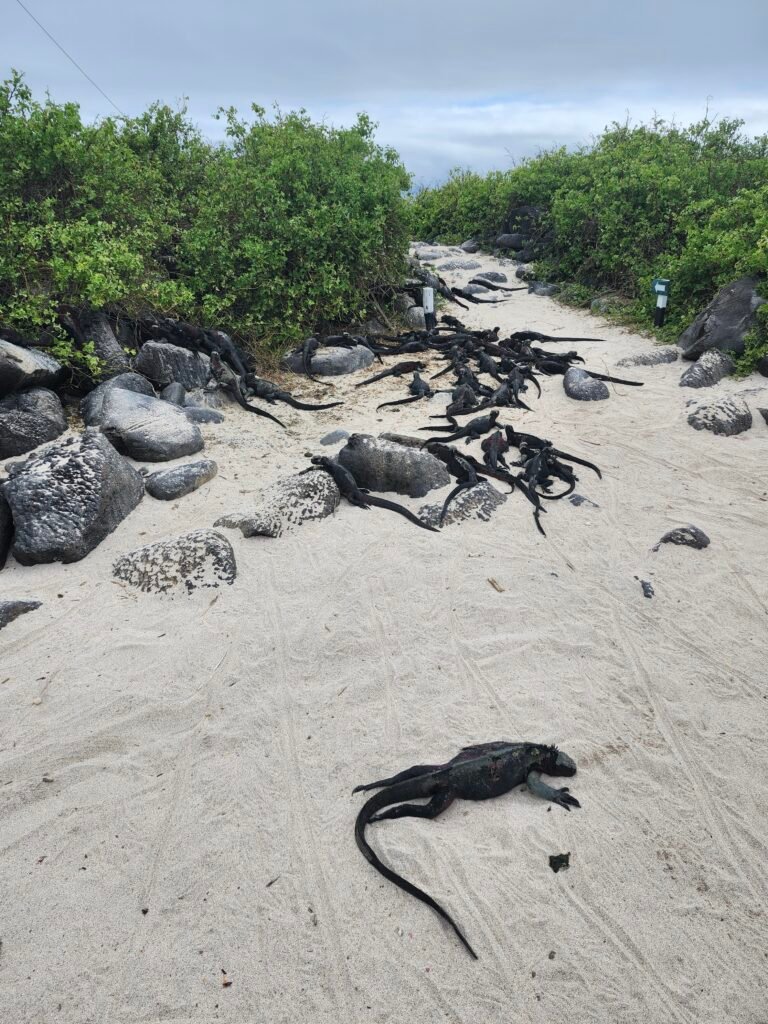
Galapagos Lava Lizard male has the orange front.
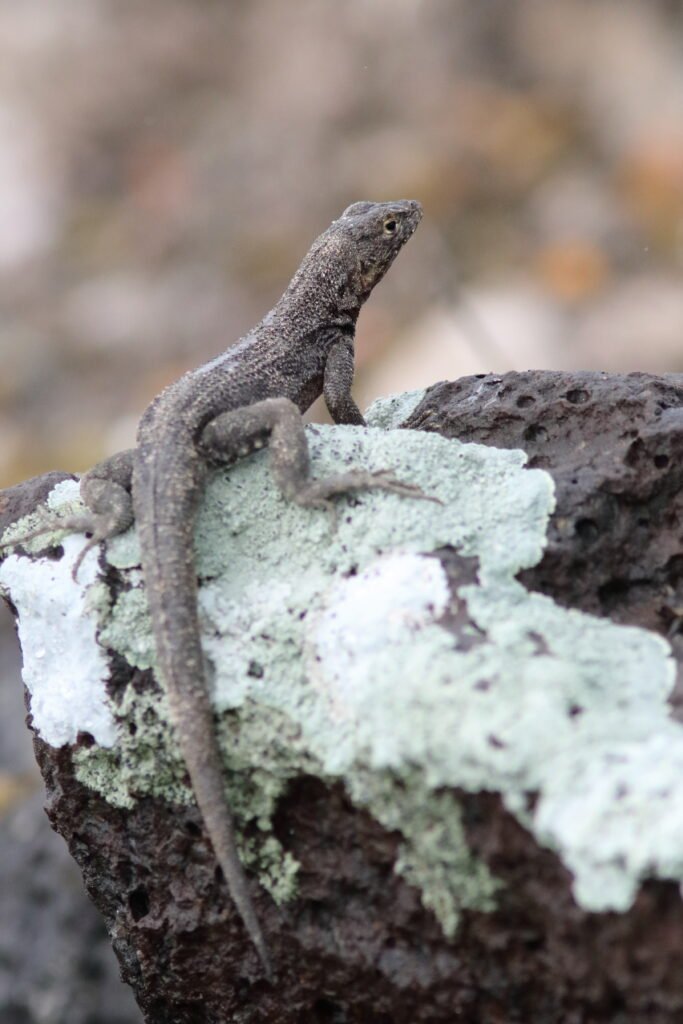
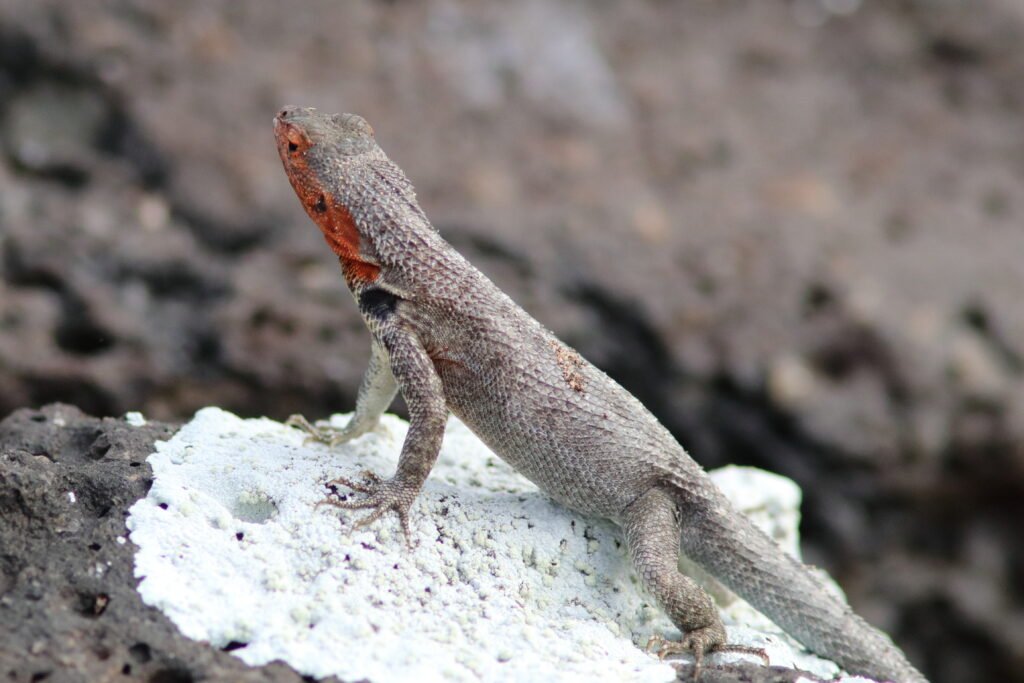
The understanding for each of these animals is that once the original tortoise, iguana, lizard, bird, mammal or invertebrate survived on an island, they slowly changed to take advantage of the specific conditions offered on the island. Over many years, they became so specialized as to be considered a species.
All of them show little fear of humans. In 1570, the islands were first mapped and labeled as “Insulae de los Galopegos” or Islands of the Tortoises.
Once on the map, the sailors came for the water, wood, and food. Back when sailors first landed on the islands, they found animals so easy to hunt and in the case of the tortoises so full of delicious meat, the sailors ravaged the islands. The islands became so important to the sailors that it even hosted a post office on Floriana Island. Sailors would drop into a barrel personal notes or important papers. Other sailors who were finishing their time at sea and headed back to the mainland would take and deliver the mail. (So far, two of the postcards we placed in the modern barrel were hand delivered by other visitors to the Galapagos Islands.) Reports indicate that when the H. M. S. Beagle left the Galapagos Islands in 1835, they carried between 30 and 40 Giant Tortoises, not for Darwin to study, but for the sailors to eat. During the 19th century, it is estimated that 200,000 tortoises were removed from the island.
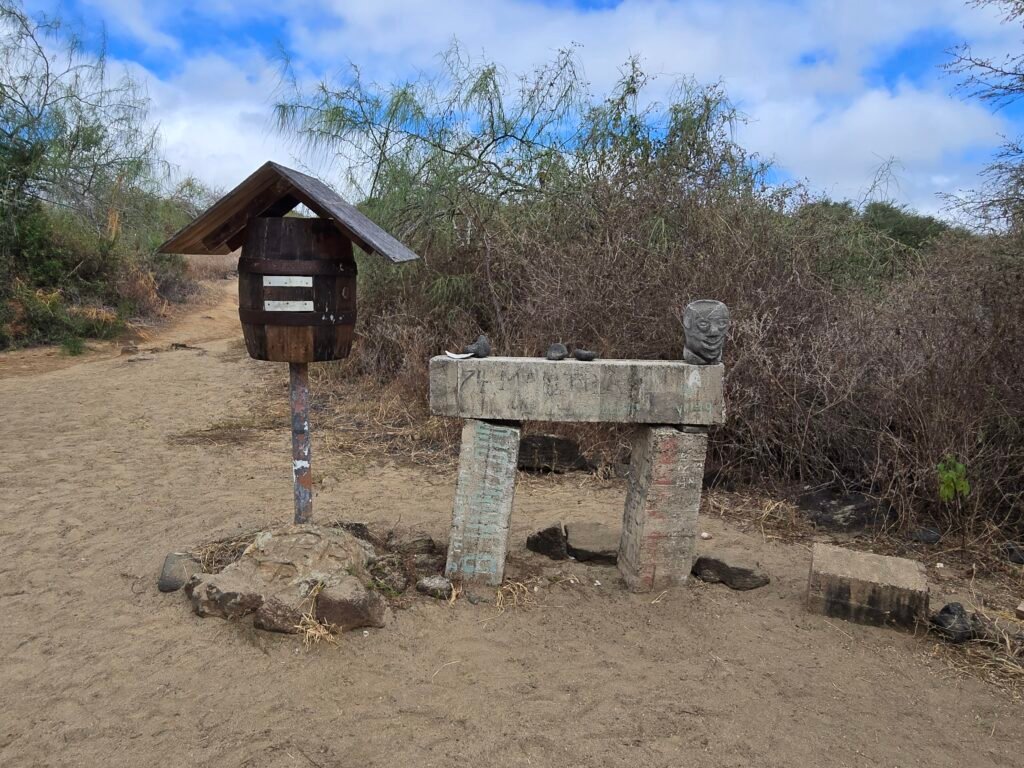
A huge amount of credit goes to the Ecuadorian National Parks for their effort to captive raise tortoises and repopulate islands after an extensive effort to eradicate rats, goats, and pigs.
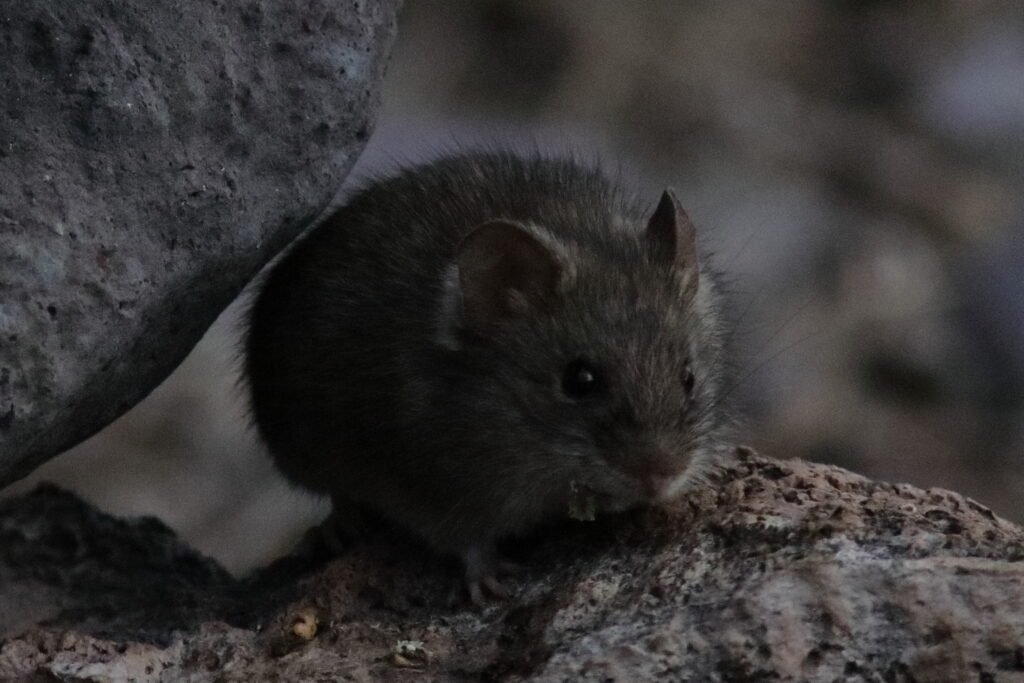
Only three native land mammals exist on the Galapagos Island, the Galapagos Red Bat, Santa Fe Rice Rat, and the Santiago Rice Rat.
Sailing ships and sailors brought a lot of undesirable land mammals, rats, goats, cats, dogs, pigs, and of course, people. These invaders decimated many of the endemic populations! We got a glimpse at a Santa Fe Rice Rat.
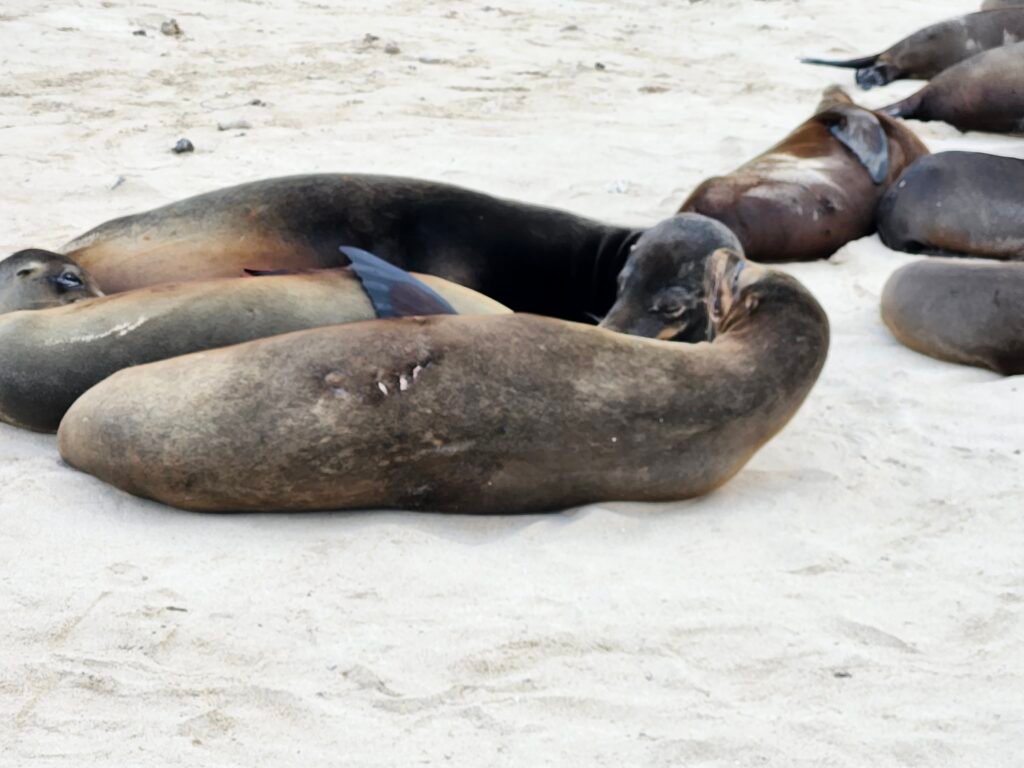
We did get lots of close up looks at the Galapagos Sea Lion and a few distant looks at the Galapagos Fur Seal. The Seal Lions lounged around on many of the beaches we visited, refusing to move as we walk by them. The one in this image shows shark teeth marks on its back.
While snorkeling, it was not uncommon to have a Sea Lion come swimming up to ask if we wanted to play. We were warned to avoid the large males.
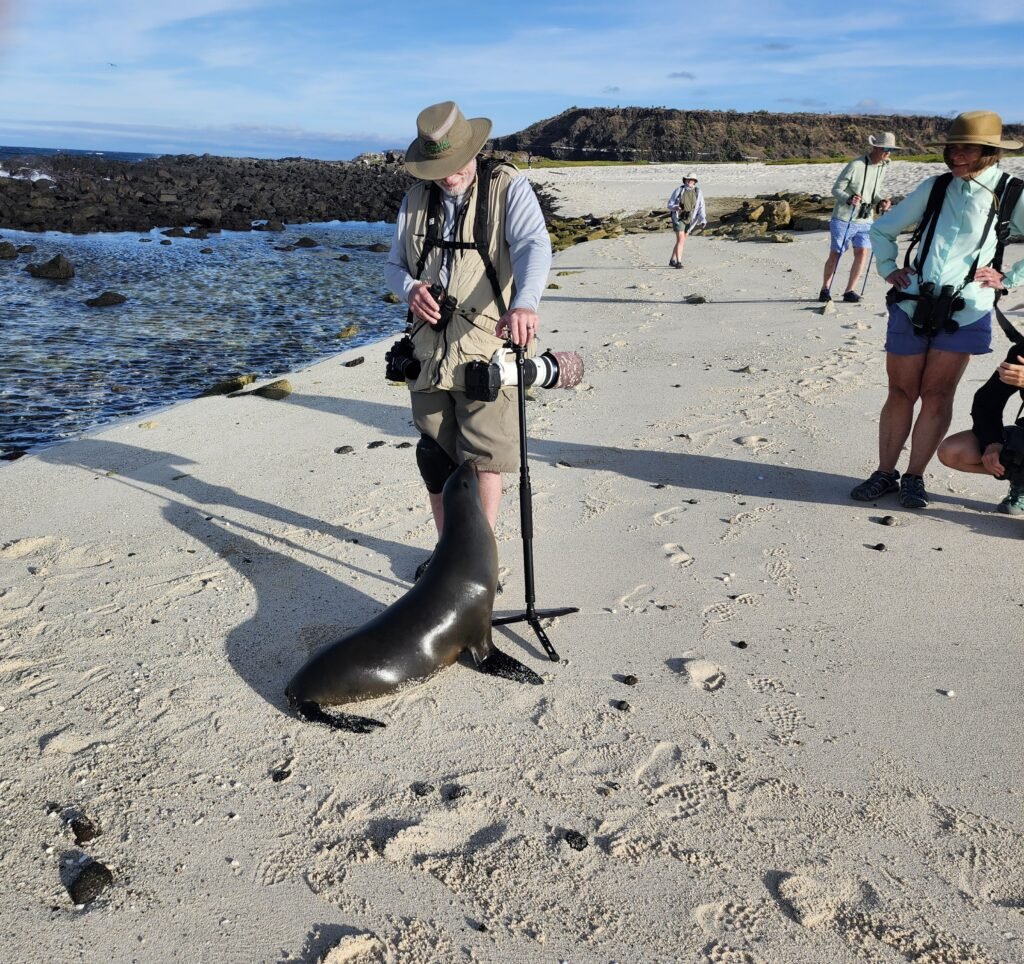
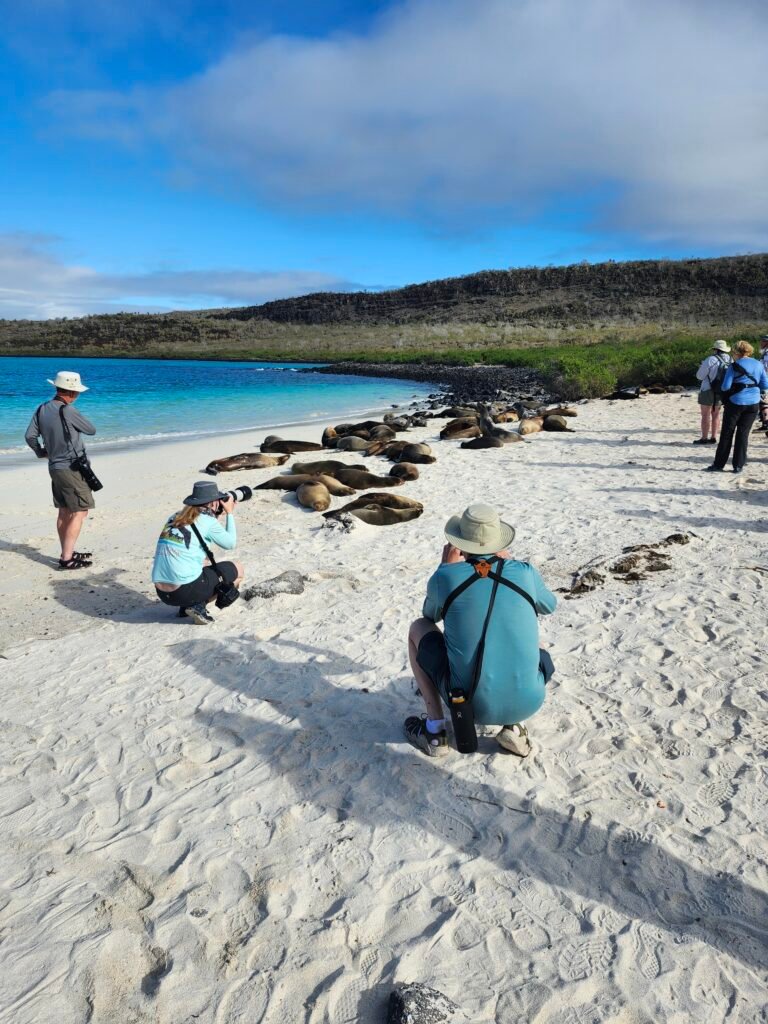
Playing seemed to be the norm for the teenagers. We watched one flinging a Puffer Fish around for ages. Our leader Kevin stood still while a Sea Lion came right up to him. Just after the picture was taken, Kevin stepped back for fear of what the animal would do next–grab his camera, pull on his pants, etc.
Other times, they would approach us as we boarded the pangas or check us out while we were snorkeling.
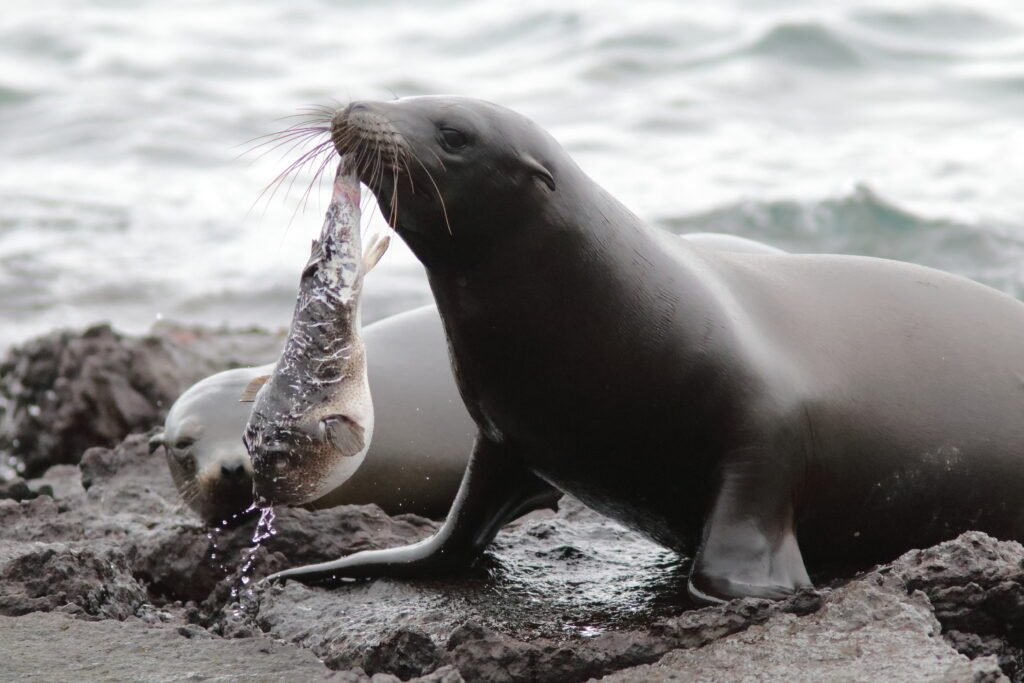
Once we found a mother that had just given birth. She worked her way up onto the rocks, the baby whining and crying the whole time until given the opportunity to suckle. Turn up the volume
While we had numerous opportunities to snorkel and see some of the endemic fish, I did not take a camera, so I couldn’t remember which ones I saw. Still, there were numerous memorable moments like swimming with 20 green sea turtles and having an endemic Galapagos Penguin look me in the face. Those will remain an image in my brain!
The trip was incredibly busy and tiring, but a wonderful experience. There are more pieces to share and that includes the endemic and interesting birds other than those already covered. Those will be the next blogs from me on the Galapagos Islands.
References
12 Tortoises in the Galapagos Islands blog by All Turtles https://www.allturtles.com/tortoises-in-the-galapagos-islands/
12 Giant Tortoises from Ecuador Identification with Picture. Tortoise Zone Web Site https://tortoisezone.com/giant-tortoises-from-ecuador/
Darwin, Charles. The Voyage of the Beagle. 1839. Accessed via Internet Archives. https://archive.org/details/voyageofbeaglejo0000darw/page/358/mode/2up?q=tortoise
A Short History of the Galápagos Tortoise in Celebration of World Turtle Day. Galapagos Conservancy blot https://www.galapagos.org/newsroom/a-short-history-of-the-galapagos-tortoise-in-celebration-of-world-turtle-day/
Rickets, Hannah. The history of the Galapagos giant tortoise. Galapagos Conservation Trust blot 6/14/23 https://galapagosconservation.org.uk/history-galapagos-giant-tortoise/
Kricher, John and Kevin Loughlin. Galapagos A Natural History. Princeton University Press, Princeton, NJ 2022.
Photos by Bob Mercer

